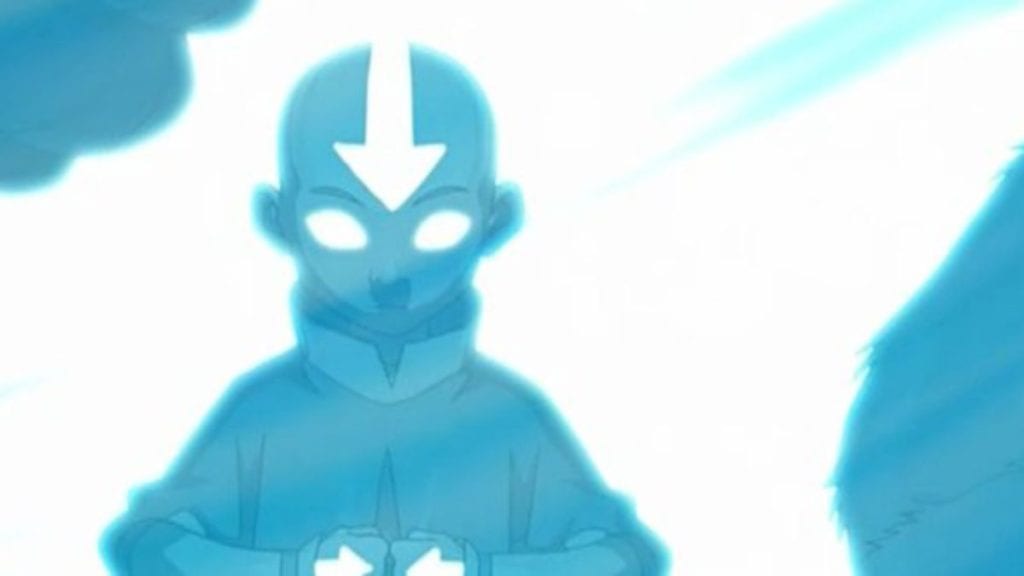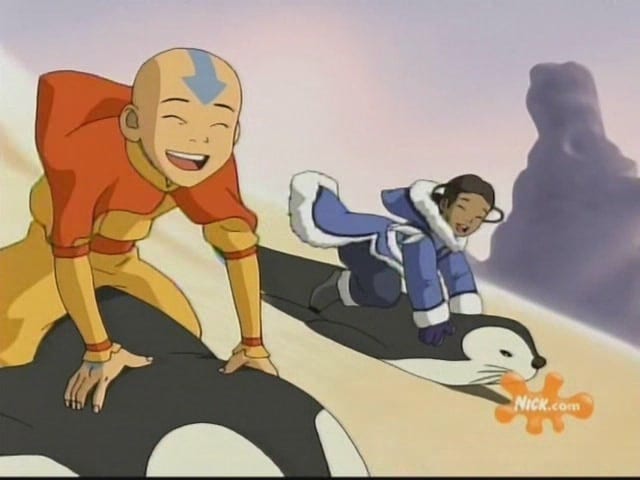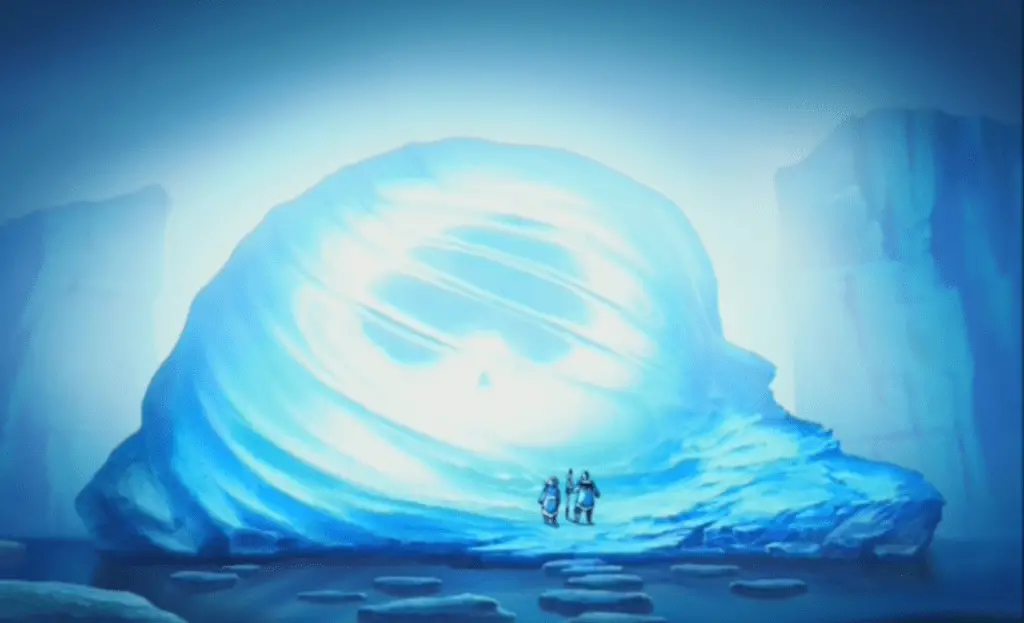I don’t think there’s any work out there that the majority of our staff love more than Avatar: The Last Airbender and its sequel series The Legend of Korra. Just the other day the mere mention of Avatar in our staff group sparked a discussion thread 100+ comments long. The Fandomentals love to love Avatar. And luckily for us, the story isn’t over. The first issue of the comic series continuing Korra’s story is due to be released in 5-6 months. So from now until then, expect to see a lot more Avatar-related content appearing on this site. I will be one such participating writer, filling up my time waiting for the new release with a weekly analytical series on the Avatar Universe. In the same vein as my previous posts on a couple of Disney films, this will be a Queer Reading of Avatar: The Last Airbender.
Why Read Avatar through a Queer Lens?
If you’re new to my Queer Readings, I’m sure you are now wondering about the benefits of viewing an animated children’s show through a queer lens.
In the same vein as my Disney articles, this new series (loosely) takes its inspiration cues from a branch of academics called “Queer Theory”. I’ll barely be touching the tip of the iceberg, but at its broadest and most basic definition Queer Theory is a critique of binaries and labels. Closely aligned with Women’s Studies, Queer Theory takes a particular focus on gender and sexuality to examine how identity can transcend boundaries — societal or otherwise.
“Queer theory is not a singular or systematic conceptual or methodological framework, but a collection of intellectual engagements with the relations between sex, gender and sexual desire.” – Tamsin Spargo, Foucault And Queer Theory
To be clear, this series is not about searching for representation where representation does not exist. I am not unpacking Avatar in an attempt to present evidence on the sexual orientation of any particular characters, nor argue that this story was meant to be interpreted in a specific way. For me, the idea behind reading any piece of media with Queer Theory in mind is looking at the ways in which a story’s plot, themes, and characters can go against the expected grain, transcend the boundaries of tired tropes and cliches about sexuality and gender roles, and leave room for interpretation and personal identification on a much broader scale.
Avatar: The Last Airbender (AtLA) in particular is a show that I believe was groundbreaking in the field of children’s media upon its release in 2005 and still is today. My hope is that reading the series with a queer lens will bring to light some of the things that make it so groundbreaking.

The Avatar Universe
The world of AtLA is a fantastical universe in which a portion of the population have the ability to manipulate or “bend” an element. From the Avatar wiki:
“The four elemental bending arts are based on the four classical elements, water, earth, fire, and air, and each is manipulated through certain martial art styles which are reminiscent of the qualities of the element itself. While bending is traditionally performed through the motions of one’s hands and feet, certain benders are able to effectively manipulate their element with only minimal movement of their body, such as by using just their head or torso.”
The concept of AtLA is therefore heavily focused on physicality and a deep connection between mind and body. Throughout the series the characters are challenged by the limitations, and in some cases the unexpected capabilities, of their own bodies. To learn the art of bending one must learn how to focus multiple functions of the body to work together in fluid rhythm. Early in the series, when Iroh teaches the young Fire Nation Prince Zuko techniques of fire bending, he explains that fire comes not from the muscles but the breath. The power may be visible in the kung-fu inspired movements, but the real source comes from a hidden place deep within.
AtLA encourages exploration of and concentration on the body, and does not shy away from how important it is to be in touch with one’s true self. This theme is perfectly encapsulated in the personality of main character Aang, the young Avatar who is the only person capable of bending all four elements.
“Some people believe that the Avatar was never reborn into the air nomads and that the cycle is broken. But I haven’t lost hope. I still believe that somehow, the avatar will return to save the world.” — Katara
Although chronologically 112 years old due to being frozen in ice for 100 years, Avatar Aang is a 12-year-old child through-and-through. In previous Queer Readings and other work I’ve done outside of this site, the characters I’ve analyzed are often adults or close to it, even when the work in question is aimed at children. Revisiting AtLA has been a refreshing retrospective into childhood. Aang’s goals in the first few episodes in particular are focused entirely around fun and risky play such as penguin sledding — a challenge that perfectly matches his fearless and energetic disposition.

Throughout my examination of AtLA I will continually return to the importance of representing the main characters’ childlike natures. Although Aang and his companions are faced with many adult responsibilities, what makes their development so important is the way they manage to retain their youth, which is a great credit to the writers.
What makes this Queer Reading slightly different to Beauty and the Beast and Tarzan is that the majority of the point-of-view is from the minds of children. Children see the world with a kind of freshness, authenticity, and openness that we tend to lose when we become adults and develop burdensome characteristics such as self-consciousness. A few of the characters such as Sokka and Zuko are actually on the fringes of adulthood, and have begun to learn the Rules of Society that challenge their worldview and make things confusing and sometimes confrontational.
In episode 4 Sokka explains that “girls are better at sewing and guys are better at hunting, it’s just the natural order of things”, a phrase he was likely taught by an adult and is simply parroting. When you combine themes such as gender roles with young characters whose age gaps are around three years (Aang and Sokka are 12 and 15 respectively), conflict of all kinds, both humorous and serious, abounds easily.
Discovering The Avatar
It doesn’t take much digging to discover how much more to AtLA there is than a story about a boy with magical powers chosen to save the world. AtLA’s authentic exploration of gender, identity, romance, responsibility, and family makes it perfect material for a Queer Reading. The series does not talk down its target audience. It recognizes and respects the timeless coming-of-age theme inherent to stories about youth by acknowledging its characters’ need to question their place in the world and discover their true self.

The structure of these essays will centre around Aang, unpacking his personality, development and journey, and comparing and contrasting it with that of his companions and enemies. The journeys of Katara, Sokka, Toph, Zuko and others mirror or reflect upon Aang’s in one way or another. Examining their stories with a queer lens (that is, focusing primarily on themes of gender, identity, and trope subversion), I’ll highlight the ways in which the journeys of Aang and his friends add depth and strength to each other’s through their similarities and differences.
It all begins next week with a boy in an iceberg, and the girl who set him free.

